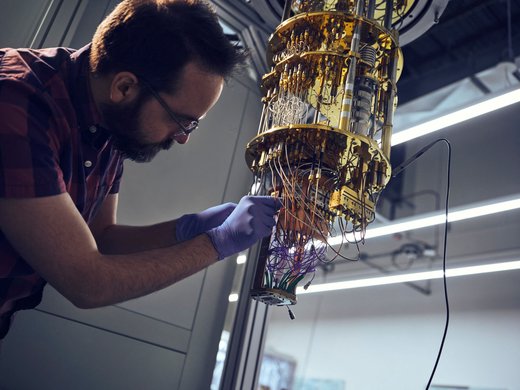n epiphany I’ve had as a result of the COVID-19 pandemic is that change that seemed impossible just last year is, today, possible. Shopify’s recent adoption of a telework model to replace the office, the quick adaptation to online teaching in schools and universities, and the realization that most face-to-face meetings can be replaced by email or Zoom video conferences are only a few examples of the impossible becoming achievable. If we have been able to so easily change those aspects of our lives that hardly seemed to need change, can we hope to fix a problem — our innovation system — that desperately needs it?
Characterized by high costs, decreasing productivity and declining levels of economic growth (as Robert J. Gordon has documented in The Rise and Fall of American Growth), Canadian and international innovation systems are based on legend and just-so stories. Foundational myths — only the private sector can do innovation, government intervention necessarily throws us off the mark, and patenting and secrecy are key to growth — prevail. The reality tells a more subtle picture, but so far that reality has had only a limited impact on policy.
Policy analysts and academics have been conditioned by the concept of lock-in, technological and social, to explain why the innovation system is the way it is. Just as we are accustomed to typing on a QWERTY keyboard because of past decisions — in this case, made due to the need to avoid typewriter keys’ sticking — we assume we are bound by the innovation system we currently have. Thus, we are stuck with industries — particularly in the pharmaceutical and biotechnology sectors — that structure themselves around patents, despite a lack of evidence that patents induce innovation. Similarly, governments and universities maintain assumptions that only the private sector can develop products beyond an early stage, although there is evidence that sometimes the public sector does a better job of it.
The possibility of challenging these assumptions lies in the speed with which they were abandoned in the immediate response of researchers, many governments and the private sector to the COVID-19 crisis. Rather than rely on proprietary control, these communities worked together to rapidly share data, knowledge and materials. As a result, in only a few months, scientists have sequenced the SARS-CoV-2 virus, developed diagnostic and serological tests and put vaccines into clinical trials. Government and philanthropy funded almost all these efforts. Pharmaceutical firms will recoup much of these monetary awards in return for devoting resources to developing a vaccine and drugs.
Governments quickly realized that international supply chains are unreliable in times of crisis. They heavily funded domestic manufacturers in other non-medical fields — for example, automobile and fashion — to quickly transform their production to supply personal protective equipment and devices needed to treat COVID-19. Government intervention not only changed, but was seen to change, the direction of innovation.
These instinctive reactions demonstrate that assumptions we have about the innovation system — the critical importance of patents, the role of government, a certain form of internationalization — are, in fact, malleable. In just a few months, we have followed a different path that has produced results. These come along with very significant costs, but the costs of not making those changes would have been far worse.
We can use this experience to return to the innovation literature to draw out some important lessons for post-COVID-19 innovation.
First, we must acknowledge that our knowledge of what makes a place, time and people innovative is limited. What we do know is that innovation systems are complex, with a lot of different parts that interact in unpredictable ways. Because of this, there is no one program or model that will work in all places or all industries, and at all times. Instead, we need to experiment with policies, building on those that work and quickly abandoning those that do not.
Second, every way we organize innovation comes at a cost. Patents slow down cumulative innovation, while too much early sharing of knowledge may lead to groupthink. This dynamic suggests that we entertain a variety of competing models within our innovation ecosystems. Rather than assume, as we have so far, that proprietary innovation models built on patents and secrets best advance desired innovation, we ought to explore multiple pathways. The non-proprietary, open-sharing approach that scientists across the world are adopting during the COVID-19 pandemic illustrates one alternative model that we ought to consider. Open science models — open sharing of publications, tools, materials and data and no restrictive intellectual property — pioneered in Canada by the Structural Genomics Consortium offer an additional model of innovation that can apply across many technological fields.
Third, it is well past due to recognize the fundamental importance of governments to national innovation success, as Mariana Mazzucato has argued in The Entrepreneurial State. No country has improved its innovation lot without significant and sustained governmental intervention, whether in the form of direct investments in research and development, procurement of innovative products and services, or business support to tap into global finance and markets. The laissez-faire approach to innovation that Canada, among others, has long adopted has been a failure, given the country’s low standing on a variety of innovation scorecards.
Fourth, innovation systems do not distribute benefits and costs evenly. Technology firms may thrive, but gig workers and the environment — through the use of rare, polluting metals and large energy consumption — suffer. Governments need to adopt proactive policies that not only distribute the benefits of innovation equally, but the costs as well.
Fifth, multi- and plurilateral trade agreements offer considerable flexibility in how a country implements its innovation policy. For example, while countries must offer patent protection of a certain length and without discrimination across technical fields, each country can adopt its own standards as long as it does so fairly. Further, nothing prevents a country from funding projects that explicitly eschew patents or from amending its regulations to give a preference to those who do not patent. That is, through both patent law and through direct spending and regulation, countries have significant flexibility to reset innovation policy.
The post-COVID-19 world could usher in an innovation system that not only welcomes government experimentation to support both proprietary and open science models of innovation, but also sets goals for innovators to achieve and redistributes benefits.
We have a real opportunity now to fix the problems in the innovation system. We may not take it, with actors reverting mindlessly to the proprietary assumptions of the current innovation system. But there is a chance that this time we will learn that change is possible and actually fix the problem.





